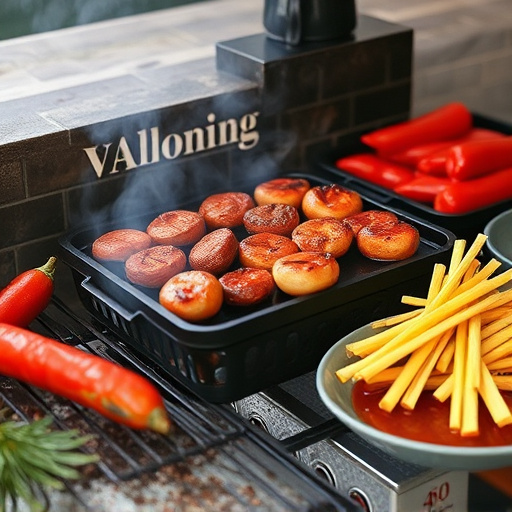Selecting the perfect whole packer brisket with prominent marbling is key for achieving mouthwatering results in a BBQ Beef Brisket Recipe. Crafting a personalized dry rub seasoning blend of salt, pepper, garlic powder, onion powder, paprika, and optional aromatics infuses flavor during slow cooking. Smoking at 225°F to 250°F (107°C to 121°C) breaks down collagen for tender meat. Slow cooking between 107°F to 225°F (42°C to 113°C) transforms tough cuts into succulent brisket. Carve slices thinly across the grain after resting to ensure each bite is moist and flavorful. Balance rich flavors with carefully chosen sides like coleslaw, potato salad, corn on the cob, or baked beans. Reheat leftovers gently in a low-temperature oven for optimal moisture retention. Elevate your recipe with advanced techniques: slow cooking at low heat, direct/indirect heat using a smoker, and sealing juices with foil wrapping.
Unleash the authentic flavor of smoked brisket with this comprehensive guide! From choosing the perfect cut to mastering the art of slow cooking, we’ll walk you through every step. Learn how to create a mouthwatering dry rub seasoning that sets the stage for deliciousness. Discover optimal smoking methods and carving techniques to perfection. Plus, find side dishes that complement your BBQ beef brisket and tips for reheating leftovers like a pro. Elevate your grilling game with advanced techniques for extra juicy results.
- Choosing the Right Brisket Cut
- Dry Rub Seasoning: The Foundation of Authentic Flavor
- Smoking Method and Temperature Control
- The Art of Slow Cooking for Tender Meat
- Mastering the Carving Technique
- Side Dishes to Complement Your BBQ Beef Brisket
- Tips for Reheating Leftovers
- Advanced Techniques for Extra Juicy Results
Choosing the Right Brisket Cut
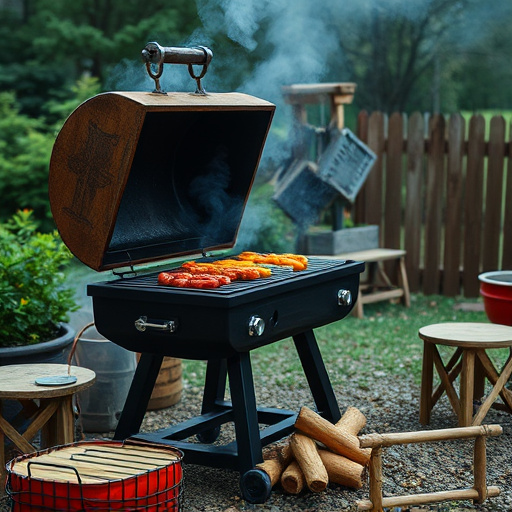
When it comes to crafting the perfect BBQ Beef Brisket Recipe, selecting the right cut is a crucial first step. Look for a whole packer brisket with good marbling – this fat distribution ensures an even cook and adds flavor throughout. The packer cut has a thick layer of fat on one side, which renders as a delicious crust while keeping the meat incredibly tender.
Avoid cuts that have been “point cut” or trimed excessively, as these will lack the necessary fat for optimal BBQ brisket results. A whole packer brisket allows for a more authentic flavor profile to shine through during the slow-cooking process, transforming it into a tantalizing treat for any BBQ enthusiast.
Dry Rub Seasoning: The Foundation of Authentic Flavor
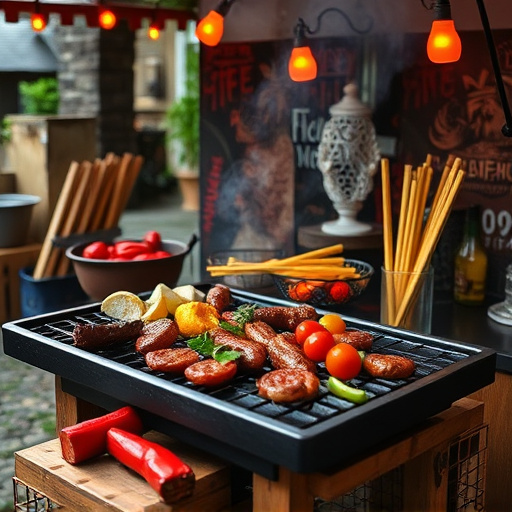
The key to unlocking the authentic flavor in a BBQ beef brisket recipe lies in the dry rub seasoning. This blend of spices is the foundation upon which the meat’s natural juices and the smoke from your barbecue merge to create a complex, mouthwatering taste profile. A well-crafted dry rub infuses the brisket with its signature flavors during the slow cooking process, transforming it from a simple cut of beef into a culinary masterpiece.
When preparing a BBQ beef brisket recipe, start by combining coarse salt, black pepper, garlic powder, onion powder, paprika, and other aromatic spices like cumin or bay leaves. Adjusting the ratios based on personal preference is essential, as different combinations can yield unique results. The rub should coat the entire brisket evenly, creating a crust that not only enhances the flavor but also helps to retain moisture throughout the long, slow cooking process.
Smoking Method and Temperature Control
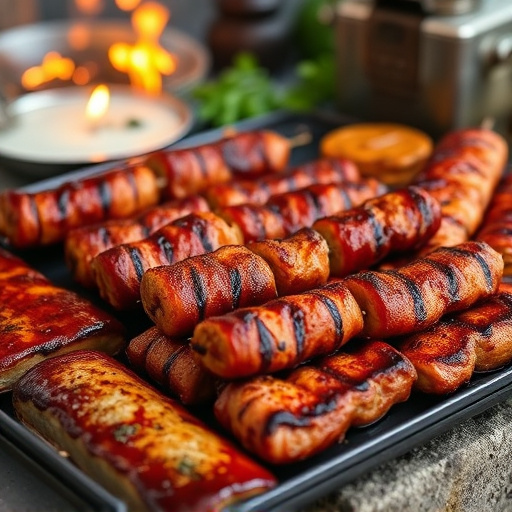
Smoking is an art that brings out the rich, smoky flavor in brisket, transforming it into a true BBQ beef brisket recipe highlight. The ideal method involves using a smoke-filled environment, typically achieved with a smoker or a grill designed for smoking. For authentic results, maintain a consistent low and slow temperature range between 225°F to 250°F (107°C to 121°C). This gentle cooking process allows the collagen in the brisket to slowly break down, resulting in tender, succulent meat. Temperature control is crucial; using a meat thermometer ensures you don’t overcook or undercook the brisket, leading to the perfect balance of flavors.
The smoking process should be patient and deliberate, allowing the smoke to gently envelop the meat for several hours. This method infuses the brisket with flavor, creating a complex taste profile that sets it apart from other BBQ beef brisket recipes. By carefully managing the heat source and ensuring even smoke distribution, you can achieve that sought-after smoky, tender brisket that’s sure to impress.
The Art of Slow Cooking for Tender Meat
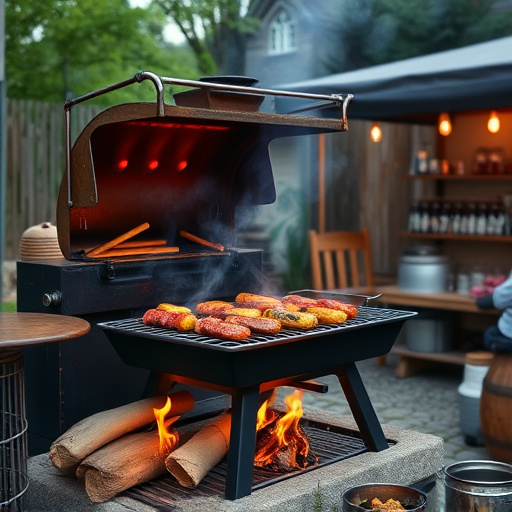
The key to unlocking the tender, succulent meat of a perfect BBQ Beef Brisket Recipe lies in the art of slow cooking. This method allows the brisket to cook slowly and evenly, transforming tough cuts of beef into mouthwatering treats. By using a smoker or a slow cooker, you can achieve remarkable results that will impress even the pickiest of eaters.
Time is of the essence when it comes to slow-cooking brisket. The process involves bringing the meat to a low and steady temperature, typically between 107°F to 225°F (42°C to 113°C), which breaks down the connective tissues, making the meat incredibly tender. This meticulous approach ensures that the brisket remains moist and flavorful throughout the cooking process, resulting in a dish that is truly a masterpiece for BBQ enthusiasts.
Mastering the Carving Technique
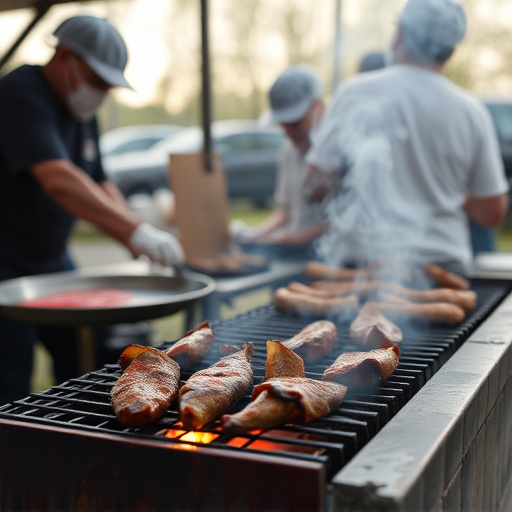
Mastering the art of carving smoked brisket is a skill that takes practice but reaps huge rewards, ensuring every bite delivers on the promise of that authentic BBQ Beef Brisket Recipe flavor. Start by allowing the meat to rest for about an hour after smoking; this lets the juices redistribute, keeping your brisket moist and tender. Then, using a sharp knife, slice the brisket thinly across the grain. This technique ensures each slice is lean yet flavorful, with just the right balance of fat to keep it juicy.
Turn your slicing into a dance, following the natural lines of the meat rather than sawing through it. Aim for even slices, about 1/4-inch thick, to present a visually appealing dish that also ensures every guest gets an equal taste of that exquisite BBQ Beef Brisket Recipe goodness.
Side Dishes to Complement Your BBQ Beef Brisket
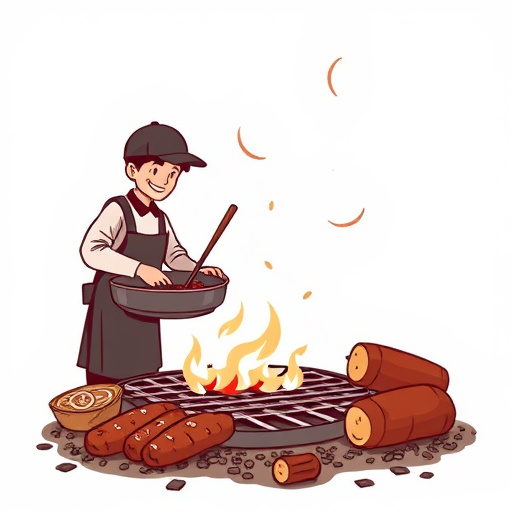
When serving a mouthwatering BBQ Beef Brisket Recipe, the right side dishes can elevate the dining experience to new heights. Think classic Texas-style sides like creamy coleslaw and crispy potato salad, which offer a refreshing balance to the rich, smoky brisket. These cool, tangy companions not only complement but also cut through the depth of flavors in your signature dish.
For an extra layer of deliciousness, pair your BBQ Beef Brisket with grilled corn on the cob, buttered beans, or even a robust baked bean recipe. These hearty options add texture and more layers of umami to the table. Don’t underestimate the power of simple sides—they’re the perfect canvas for letting the star of the show—your perfectly smoked brisket—shine.
Tips for Reheating Leftovers

When reheating your smoked brisket leftovers, the goal is to maintain its tender texture and rich, authentic flavors from the BBQ beef brisket recipe. Avoid overcooking or steaming it directly, as this can make the meat tough. Instead, consider slicing the brisket thinly across the grain before warming it in a low-temperature oven (around 250°F/120°C) for about an hour. This gentle reheating method keeps moisture locked in, preserving the mouthwatering results of your original cooking effort.
For added flavor and to bring back that smoky aroma, you can brush the brisket with barbecue sauce during the low-temp reheat or simply place it near a warm grill or smoker for a few minutes. Remember, leftovers from a well-executed BBQ beef brisket recipe are just as delicious as the fresh meal, so take your time and use these tips to enjoy that authentic flavor at any time.
Advanced Techniques for Extra Juicy Results
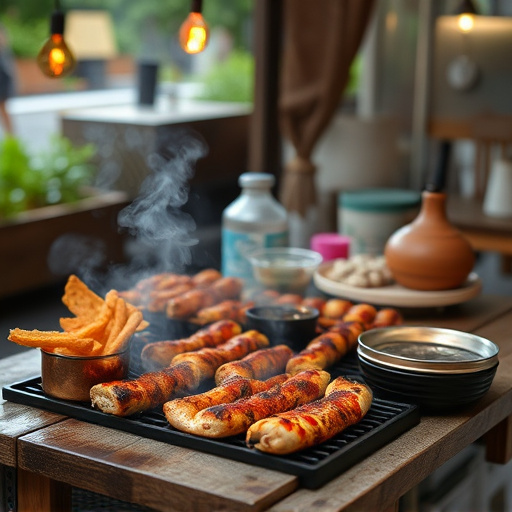
For a truly authentic and juicy BBQ Beef Brisket Recipe, consider these advanced techniques to elevate your culinary experience. Slow cooking is key; allowing the brisket to cook gently over low heat ensures the meat remains tender and succulent. Use a combination of direct and indirect heat, often achieved with a smoker, to maintain consistent temperature. This method prevents overcooking while the smoke infuses the meat with its distinctive flavor.
Additionally, the magic lies in the marinades and rubs. A dry rub with a blend of spices can be massaged into the brisket before cooking, enhancing both taste and texture. Using a combination of coarse salt and brown sugar creates a caramelized crust while locking in moisture. For extra juiciness, finish the cook by wrapping the brisket tightly in foil, allowing it to rest for an hour or more before slicing. This simple step ensures every bite is drenched in rich, mouthwatering juices.
